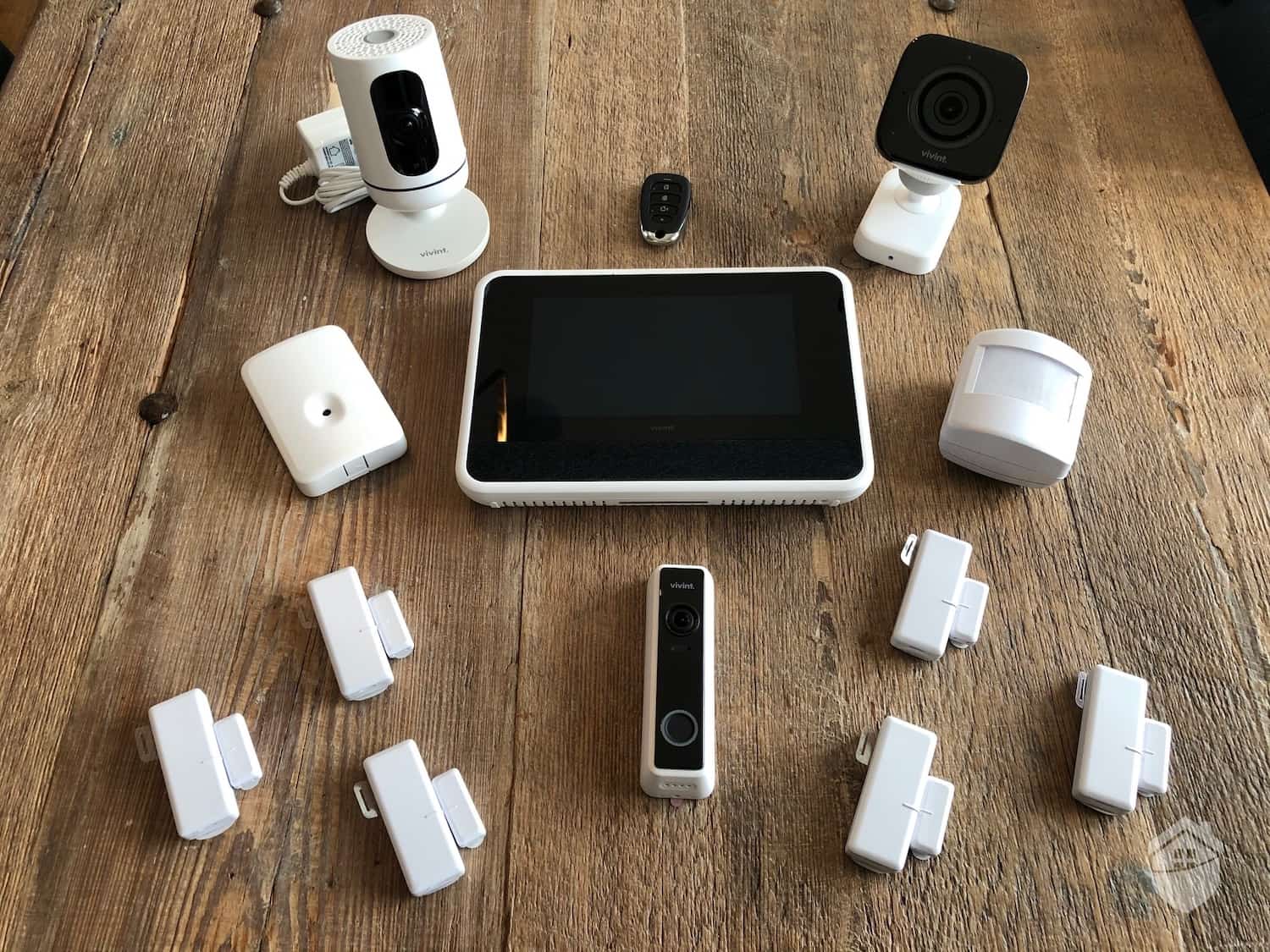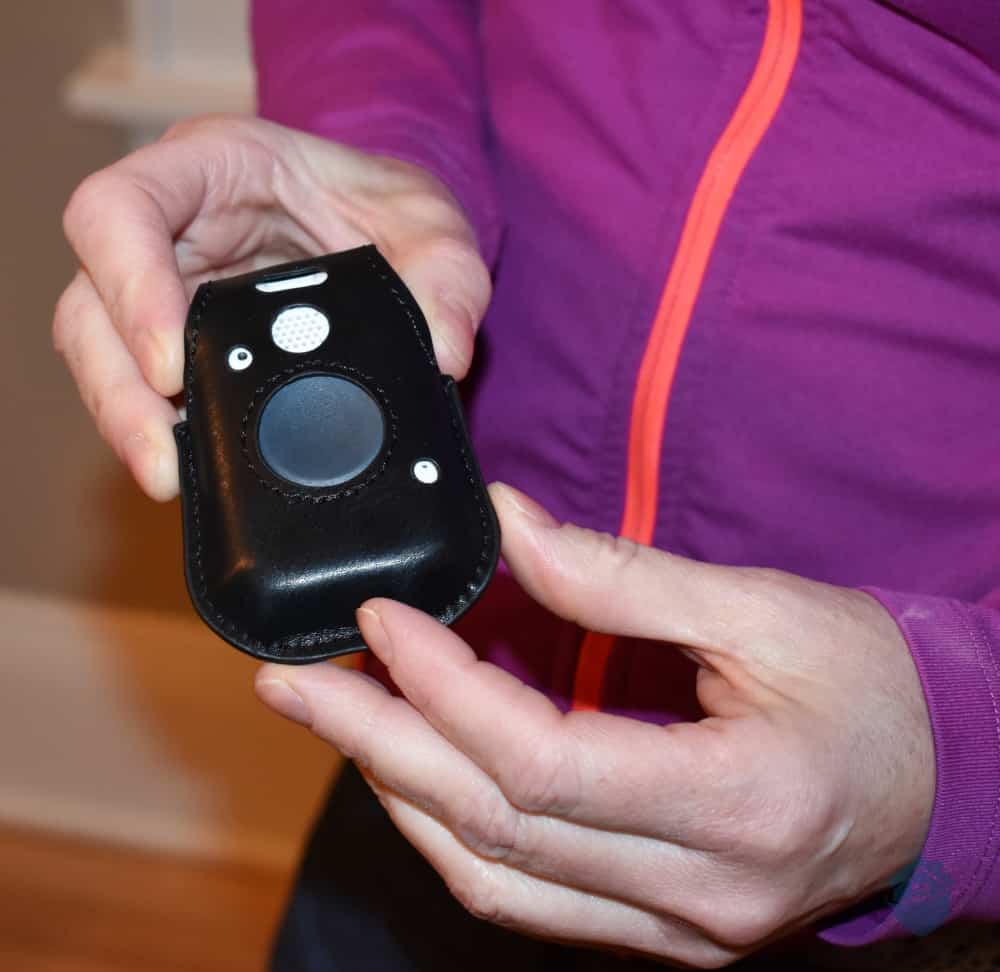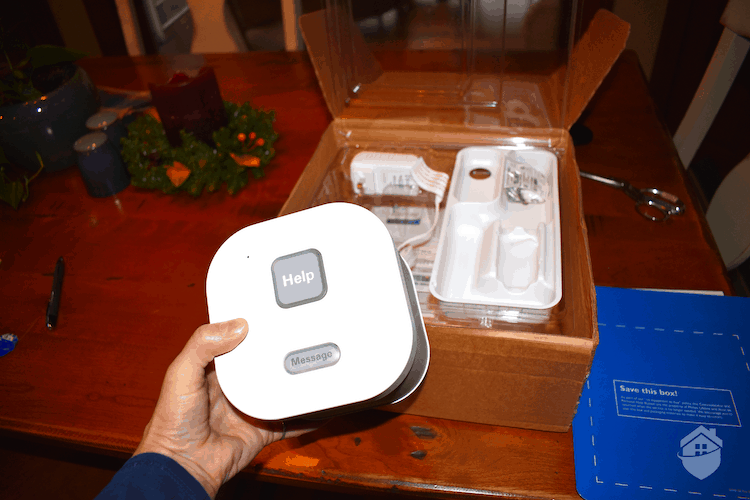Let’s face it, aging can be a little scary. Not many people want to end up in a retirement home, but they also don’t want to constantly ask for help from their family. Medical alert systems can alleviate these stresses. They help millions of Americans safely age in their own home. And they’ve come a long way from the landline system of the 80’s. Nowadays, you can get almost any feature you want in your medical alert system, from on-the-go protection with GPS tracking and automatic fall detection, to regular check-ins, and more.
>> Read About: Best Medical Alert Systems of 2023
With the sheer number of medical alert systems available on the market today, looking at all the options feels like deciphering ancient text. Every brochure starts to look the same, and all of the features blend together. Don’t worry though; we’re about to give you the Rosetta Stone. We spent countless hours researching and testing medical alert systems to create this guide that covers the following topics:
What is a Medical Alert System?
A medical alert system refers to the devices and services that make it easy for someone to call for medical support with the push of a button. Basically, medical alert systems can be anything from a dedicated system for alerting medical professionals of a medical emergency like a fall to an app on your smartwatch that calls a designated loved one with a single button.
Generally, we can categorize every medical alert system as a monitored alert system or an unmonitored alert system.
Similar to home security systems where a monitored system means your provider actively monitors your security system, monitored medical alert systems include a 24/7 call center for responding to alerts. When the button is pressed, or a fall is detected, the monitoring center will get in touch right away (usually within 30 to 45 seconds) via the two-way-talk feature on the device. And if needed, they will call emergency medical services on your behalf.
Unmonitored systems avoid this monthly fee with the tradeoff that pressing the alert button notifies a friend, family member, or caretaker.
>> Learn About: Best Medical Alert Systems Worn as Watches
Does a Cell Phone Work Just as Well?
At first glance, it might seem like a cell phone can do everything a medical alert system can. While from a technical perspective that’s true, a medical alert system is different because it always includes a device you can keep on your person literally 24/7. This is where a cell phone falls short.
Even people completely addicted to their phones leave it on their nightstand when they get up in the middle of the night to go to the bathroom. Or, they might leave it in the other room as it needs to be charged. Each of these times leaves you vulnerable to falling without a way to call for help.
A medical alert system includes a simple device that someone can wear like a bracelet or necklace pendant that has a single button to call for support. This makes it easy to sleep with, take in the shower, and generally keep with you at all times.
>> Read More: Best Medical Alert Bracelet Systems
Who Needs a Medical Alert System?
Whenever I think of a medical alert system, my mind always goes to the classic Life Alert commercial that says “I’ve fallen and I can’t get up!” You know, the one where they pan to different people falling throughout their house? I know this commercial makes you think medical alert systems are only for the aging population. But, this couldn’t be further from the truth. There are plenty of people who can benefit from a medical alert system including:
- Anyone Living Alone: If a medical emergency happens when you live alone, you can end up stranded in your house or apartment. All it takes is one slip in the bathroom while your phone is on your nightstand to end up in a difficult situation. A medical alert system alleviates these issues.
- Diabetics: Any diabetic can use a medical alert system to get support from a qualified care professional any time they have issues with their blood sugar. They can direct you to the appropriate service, whether that’s calling an ambulance or contacting a loved one to give you a dose of insulin.
- Being Home Alone Makes You Anxious: It’s not uncommon for someone to get anxious when home alone. In fact, 10% of adults and 20% of teenagers experience autophobia or the fear of being alone.1 A medical alert system on your person can help you avoid these feelings of isolation knowing that help is always just one button away.
- Your Neighborhood is Dangerous: Some medical alert systems can go with you when you leave your house and offer GPS capabilities. So, keeping your alert device in your hand lets you immediately contact authorities with your location already tracked.
- Sleepwalkers: While minor cases might seem harmless, sleepwalking can quickly become dangerous if the sleepwalker finds their way out of their home. Medical alert system providers that offer activity monitoring can help keep sleepwalkers safe. These systems send an alert when they notice unusual activity, like leaving your home late at night.
- Seniors: Just like the commercial we talked about earlier, seniors remain the main use case for medical alert systems. It gives them the support they need to age in place for longer as they can reach medical help at any time.
Did You Know? Medical alert systems are very personal devices. What I mean by this is the actual alert button needs to be comfortable for the user to wear at all times. So, we recommend avoiding this as a gift item. Instead, sit down with your loved one and go through the options with them to find what works best for their needs.
How Much Does a Medical Alert System Cost?
Depending on the features you need (we’ll dive into that in a bit), medical alert systems range in price pretty wildly. For just the equipment of an unmonitored system, expect prices to range anywhere from $40 for cheap medical alert systems all the way up to $500 and above. GPS capabilities, landline connections, and long-lasting batteries to prevent downtime drive the cost of these unmonitored systems up.
If you want a monitored system with a 24/7 call center of care professionals ready to help, expect to pay somewhere between $25 and $50 per month. Some providers also charge an upfront fee to cover part of the equipment costs. The upfront fees shouldn’t be much higher than $100. Beyond the factors that drive up the cost of unmonitored systems, we also found that monitored systems varied in the quality of the care professionals at their call centers provided.
Beyond the clearly advertised monthly cost of monitored systems, make sure to check the following fee, as well, when comparing costs:
- Activation Fees: Usually, companies activate a monitored system for free as part of the monthly fee and contract. But, some companies charge upwards of $200 just to activate the system. So, make sure to check this specifically before signing any contracts.
- Shipping Fees: At most, shipping fees might cost you $10 to $20, but most companies throw it in for free.
- Device Fees: Generally, you only need to pay activation fees or device fees. Both shouldn’t be required unless you want additional help installing the system.
Pro Tip: Most providers I spoke to in my research authorize their salespeople to provide discounts to clients who ask for one. Definitely ask every representative you talk to if the price they’re quoting you is the best price they can provide. You’ll usually end up with a discount!
Does Private Insurance, Medicare, or Medicaid Cover the Cost of a Medical Alert System?
Whenever you’re looking at the cost of a medical product or service, you should always find out if your insurance can cover it. For private insurance, coverage entirely depends on your specific insurance provider and plan. On the other hand, Medicare comes in three main types.2
- Medicare Part A covers most necessary medical care. It can include coverage for hospital care, inpatient services, testing, and other necessary services. This type of Medicare almost never includes coverage for a medical alert system.
- Medicare Part B covers more than just necessary medical care. These plans also cover medical equipment. But, this still doesn’t include a medical alert system. Medical equipment in this case refers to things like wheelchairs, oxygen equipment, and blood sugar monitors. You need a prescription from a doctor for Part B to cover some of your medical equipment expenses.
- Medicare Part C, commonly called Medicare Advantage, is when you can start to find coverage for medical alert systems. If you have coverage and how much you can get covered depends on the specific Medicare Advantage plan you choose.
As for Medicaid, the state you live in determines whether or not you can get your medical alert system subsidized. If you can, it will most likely be covered under a specific program called Home and Community-Based Services (HCBS). In most cases, this coverage requires a waiver that allows you to claim the benefit. But, don’t let that scare you! Over half of all Medicaid spending goes toward HCBS expenses.3
>> Learn About: Does Medicare Cover the Cost of Medical Alert Systems?
What Features Does Your Medical Alert System Need?
With all the potential features in a medical alert system, you can end up feeling like Inspector Gadget. But instead of tools for catching criminals, you can get an arsenal of futuristic features to keep you safe. From automatic detection of falls to GPS tracking, medical alert systems can come with a wide range of features. You probably don’t need all of them though, so here’s a breakdown of common features we saw when testing 11 top providers:
- GPS Tracking: If you ever plan to take your medical alert system with you outside of your home, GPS tracking is a must-have. It gives the care professional your exact location so they can send help directly to you when needed.
- Emergency Call Button: When choosing a system for you, make sure to look at the actual emergency call button you need to keep on you. They can take the shape of a necklace, wristband, or small button to keep in a pocket. Some also integrate right into your smartwatch. Just make sure to pick a form you can comfortably keep on you at all times.
- Battery Backup: You need your medical alert system to work even when the power goes out. This is where your battery backup comes in. Look for how many days, weeks, or even months your system can work with just battery power to compare providers.
- Automatic Fall Detection: Some medical alert systems include fall detection, using sensors that identify sudden changes in elevation. These sensors integrate right into the emergency call button. When it detects a fall, it automatically contacts the monitored support.
- Cellular Connection: Instead of a landline connection, some providers offer a cellular connection. This reduces the size of the equipment you need for your cellular medical alert system and allows you to take your alert device anywhere you go. Most providers use either Verizon or AT&T as a cellular provider. Check out our roundup of the best cellular alert systems to learn more.
- Certified Monitoring: The Monitoring Association created a scaled quality assessment so you can easily compare call center qualities between providers. For top-tier support, always look for providers that receive the Five Diamond designation.4
Pro Tip: If you want to use a cellular connection for your medical alert system, always check to see if your provider’s cell service covers your home. But, don’t just trust Verizon or AT&T’s maps. Instead, use the FCC’s coverage map that clearly shows service coverage.5
Convenience Features to Look For
Top-tier medical alert system providers go above and beyond with their features. These providers look to provide features that truly make their offerings stand out by making your life easier. A few convenience features you can look for in a medical alert system include:
- Activity Tracking: Using the GPS capabilities of your alert button, some providers offer activity tracking that sends an alert of any unusual activity. This is great for any elderly suffering from mental ailments that cause them to wander. These systems also send alerts for inactivity so loved ones or care professionals can conduct a wellness check.
- Medication Reminders: It’s really easy to forget to take a prescription every once in a while. With a medical alert system that gives you medication reminders, this becomes a problem of the past.
- Medical Check-Ins: Beyond pressing the alert button to get in touch with help, providers can also offer regular check-ins. This is when the call center reaches out to you to monitor your health and see how you’re doing. It’s great for noticing any minor changes you and your family might think are insignificant that are actually a sign of something more serious.
Wrapping it Up
Medical alert systems serve a lot of purposes. It’s kind of like a Swiss Army Knife for anyone that wants to age safely in place. They give you an easy way to get help and can come with a whole bunch of features that make it safer to stay home alone in your golden years. Even better, some states subsidize the cost through Medicare Advantage so it might not be as expensive as you think!
And remember, these systems can go way beyond serving as a great tool for aging in place. Anyone who gets anxious when home alone, lives far away from friends and family, or even sleepwalkers can live safer and more comfortably with a medical alert system. Just make sure to choose a provider that offers the features you need.





